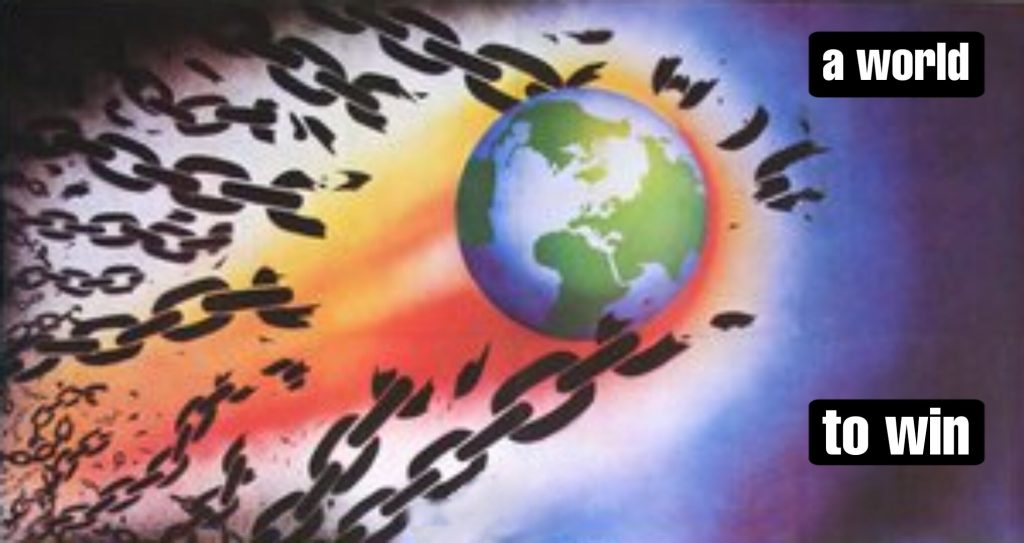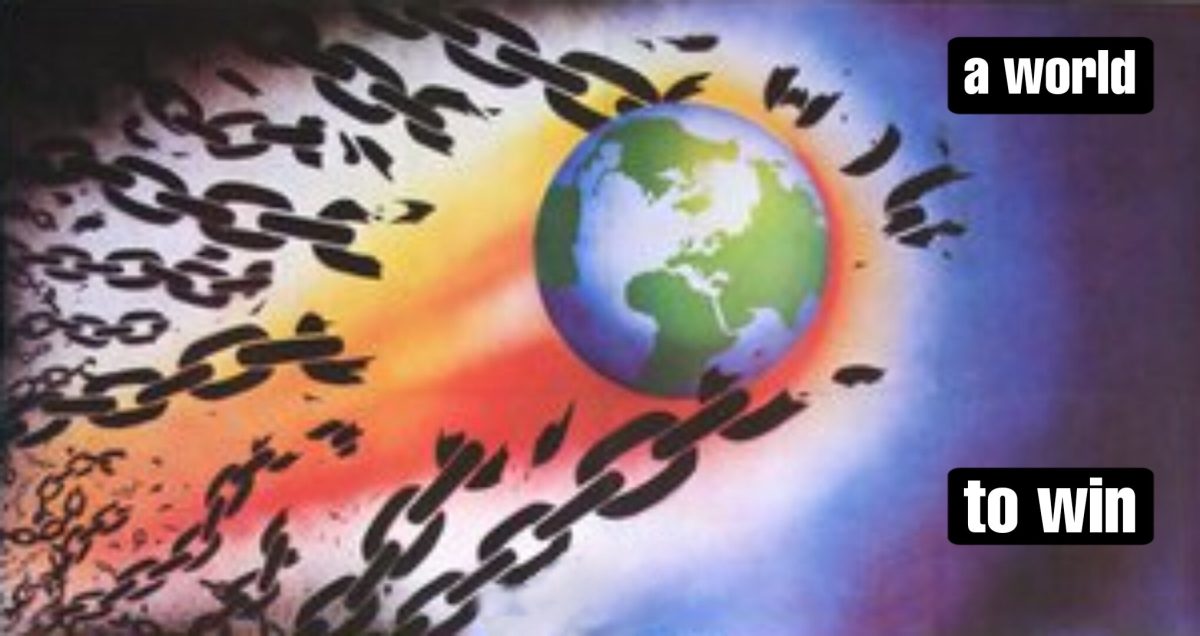
Disability Pride month has just finished in July. Inspired by it, we have developed some basic Marxist analysis to offer in combination with disability activism and organising.
WHAT IS DISABILITY?
Disability is a condition of the mind, brain or body that limits the ability of a person to do things like an “average” person would.
WHAT IS MARXISM?
Marxism is a materialist science of Revolution which we use as a guide in putting an end to exploitative systems such as Capitalism, Imperialism and feudalism and replacing them with socialism where society is run for the benefit of all.
WHERE IS THE OPPRESSION OF DISABLED PEOPLE LOCATED?

Typically disability is discussed and analysed with the following models:
The medical model says that the problems disabled people face originates from their own bodies, and that this can be fixed with medical interventions provided by charity or by personal wealth or by insurance or a state run medical system.
The Charity model and Tragedy model are related to this: disabled people deserve pity and should be provided basic subsistence from charity.
The Social model says disabled people are discriminated against by society not providing them adequate facilities to to operate in society like an able bodied person.
Related models to the Social model include Rights-Based and Identity models.
However there is strong debate among disabled people over the validity of all these and other models.
So is the oppression of disabled people located in their physical bodies or is it “socially constructed”?
Feminist analysis of women’s oppression is instructive: women’s oppression under patriarchy is on the basis of their female bodies but the limits imposed on women are socially constructed.
An average woman is physically weaker than an average man and therefore technically “more disabled” in this way – however feminism asks why we don’t use smaller bricks in construction rather than fixate on women builders struggling to lift heavy blocks.
Marxism is a way to not only understand but also change the world and so it is vital for the vast majority of humanity who are economically exploited and oppressed.
Disabled people can use Marxism to integrate with other revolutionary movements and to go beyond the simple medical/social model limits of analysis.
Onwards to a Revolutionary model of disability!
WHAT IS CAPITALISM AND IMPERIALISM?
Capitalism is a political economic system in which workers as a class produce commodities which are sold to generate profit for a capitalist class.
Imperialism is capitalism on a world scale.
Workers
Disabled workers under capitalism want to work in order to earn an independent living.
They face barriers to employment which they are trying to overcome. In some ways this is similar to women (re-) entering the capitalist workplace in the 70s in the imperialist countries.
Capitalism also relates to workers by disabling them.
Losing body parts to machines, back injuries, pollution, mental health stress – the list of injuries people experience through work under capitalism is endless.
Imperialism disables millions of people worldwide via its cluster bombs, butterfly landmines, defoliants, radiation bombs and so on.
In its low-tech raw form, Imperialism will disable workers by contracting militias to enforce enslavement of people mining minerals by hand, for example by cutting feet off child diamond miners as a punishment or so they cannot escape.
Deliberately keeping the food entering the ghettos of Warsaw 1939-1943 or Gaza 2006-present at starvation levels is another example of deliberate disablement of people by malnourishment.
Commodities
Commodities are manufactured products that can be sold for profit. They have a ‘use value’ i.e. something they are useful for, and an ‘exchange value’, i.e. a price they can be sold at. They are a central component of capitalism.

Capitalism can turn anything to a commodity, including human beings.
Disabled people can be converted into commodities to “soak up” financial capital saved by families, or collected socially by taxes or insurance premiums. The capitalist class knows it can access these family savings and social funds because people generally want disabled people to have access to care. This Capital stored up in the commodified body of the disabled person is immensely valuable, and will be accessed by the capitalist medical and care complexes to be converted into medical experimentation, assistive technologies or, drugs, exploitative labour performed mostly by migrant women – and profit.
From the perspective of global Capitalist monopolies, the disabled person has been transformed into a commodity – a big pile of money – that they can access by “caring for” the disabled person.
There are parallels with this analysis and the insights developed by Marxist feminists 100 years after Marx’s death of the hidden labour involved in reproducing the working class itself.
WHY DO DISABLED PEOPLE NEED MARXISM?
Marxism is the strategy of liberation for all humanity, which is ultimately led by the most oppressed and exploited sections of humanity.
Capitalism is the dominant world system, and it comes in many flavours: from semi-feudal comprador regimes on the periphery of the capitalist world system to social democratic welfare regimes of the “advanced” imperialist nations, as well as the fascist regimes generated as Imperialism rots.
In any of these Capitalist States, disabled people will be on or near the bottom.
Although social democracy (often called “socialist” in ordinary people’s conception) may seem like it is the best option and something to strive for and to organise for rights within, social democracy is a temporary compromise available to Imperialist nations
Life under Capitalism whether in the form of Imperialism, fascism, social democracy or revisionist socialism will remain a trap, and often a miserable one for disabled people. Conditions can be at best tolerable but always one step away from eugenicist elimination.
Under socialism however (socialism is the transition state from Capitalism to Communism) we attempt to move collectively “from each according to their ability to each according to their need”. Society is run democratically (led by the working class and oppressed peoples) and according to peoples needs rather than profit. Waves of cultural revolution are generated among the people to overcome entrenched opposition and corruption to this process from bureaucrats and reformists within the socialist system.
What people can expect from this process of socialist followed by cultural revolution is an increase of meaningful standard of living combined with growing power and participation in the development of society.
This is what disabled people and all oppressed and exploited people have to gain from socialist revolution in our lifetime.
WHY DOES MARXISM NEED DISABLED PEOPLE?
Our liberation movements are made up of people, driven primarily by the most oppressed. Disabled people as an oppressed group can play their part like any other.
Disabled people comprise 10-20% of the global population, and all human beings as they age develop disabling characteristics.
Building an anti-ableist consciousness similar to the anti-racist and anti-sexist consciousness that has been established in the Marxist movement will be important for these disabled people’s entry and participation in the movement.
Owning the streets is the ultimate test of a movement and disabled people can put their bodies on the line like any other comrades.
Indeed some disabled people have unique advantages – a wheelchair is a steady mobile platform that is hard to budge but can be put to use as a support structure, for example.
Street movements don’t rely only on people in the streets of course: there is a logistical tail of people forming an infrastructure to organise and make things happen. Many of these roles can and should be filled by disabled people.
For those who cannot participate in the struggle, it’s important to emphasize that they still have inherent worth.
Capitalist regimes of fascist and social democrat flavour have targeted such people for euthanasia on a cost basis.
Indeed today “progressive” capitalist regimes such as Switzerland and Canada are encouraging the “choice” of suicide for mentally ill people.
The experience of groups like the Red Army Faction in German which recruited from the Socialist Patients Collective proves that mentally ill people can “turn illness into a weapon”.

The experience of the Monaghan Asylum occupation in Ireland proves something just as important: the organising of workers involved in the care and support of disabled people is a vitally important and interlinked task.
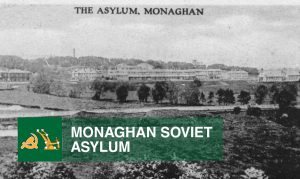
The American communist and disability activist Helen Keller was able to write theory and organise people during a strongly anti-communist and eugenicist period in the u.s.

Frida Kahlo, the Mexican communist, disabled artist and self-described daughter of the Mexican Revolution illustrated the issues of disability, socialism and revolution through her artwork.
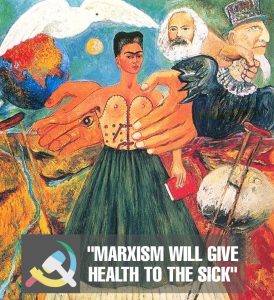
Rosa Luxembourg was a Jewish-Polish-Internationalist revolutionary and a physically disabled woman all her life until it was ended by German fascist thugs under orders from German social-democrat politicians.

During the Great Proletarian Cultural Revolution there were huge waves of popular innovation, generating new solutions to ancient civilizational problems using the power of the politically aware power of the masses. One such example of this was captured by travelling Western journalist Felix Greene with his film series, “One Man’s China”.
One episode of his series, called “The Iron Tree Will Blossom and the Dumb Will Speak” captures the education and healthcare in a school for mute children. Education had been a closely-guarded privilege of the elite in China for millennia. The film demonstrates the human-centred approach to education as well as the levelling and empowerment of all.

Disabled people can and do self-organise, but there will remain some disabled people who cannot do so.
Sections of humanity that cannot defend or organise for themselves have some similarities with non-human life that cannot self-defend or self-organise. The billions of animals cruelly consumed by the industrial food system annually and the parts of nature such as forests, rivers, mountains all require humans to organise and defend them on their behalf.
Disabled people are a huge section of humanity (indeed as we age, every human in some ways becomes progressively more disabled). And not only that, but disabled people bring a unique set of experiences based on their disabilities and the oppression they face because of them. As the organised force of humanity for its own liberation, Marxism needs to incorporate disabled people in order to fulfill its own mission.
A NOTE ON QUEER THEORY
Queer Theory is an anti-materialist philosophy developed in the bourgeois academy. It is opposed to and a competitor with Marxism. Queer Theory has escaped from English Studies university departments and taken root in social justice and radical liberal activist movements. Alongside 3rd Wave Feminism it has replaced the original Gay Liberation and Women’s Liberation movements originating from the 1968 era of national liberation and cultural revolution. Is threatens to do the same thing with Disability Studies and the Disability Rights Movement. Numerous disabled influencers and academics are seeding the movement with commentary on how “disabled bodies queer society” and so on. The experiences of the Gay, Women’s and Colonized People’s liberation movements being taken over and their materialist socialist perspective replaced with postmodernism has proved disastrous to them. Queer Theory is a product of the rotten imperialist state and will never lead to liberation from it for disabled people or anyone else.

A NOTE ON INTERSECTIONALITY
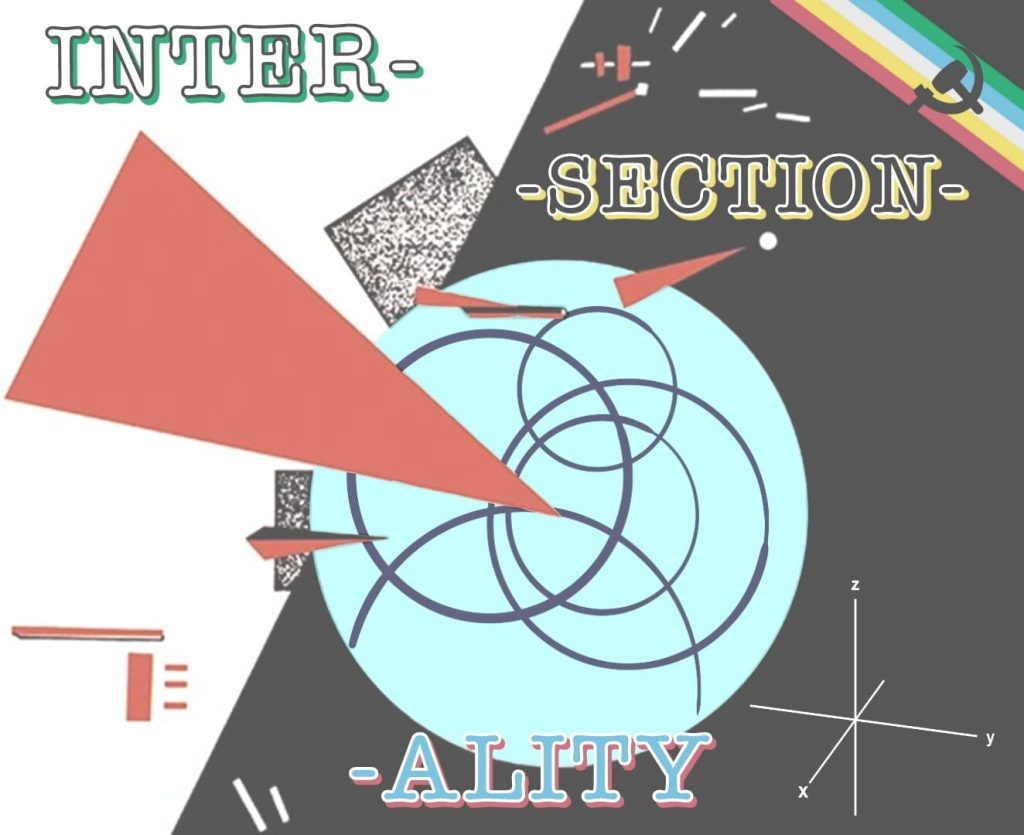
Intersectionality is an analytical framework first coined by a black female legal theorist in the u.s. in 1989.
It holds that people can have multiple aspects of their existence which “intersect” along various axes of oppression. These different oppressional intersections combine to expand or dampen the overall oppression or privilege experienced. For example, if a disabled person is also from a racialized group they will experience worse oppression than a disabled person from the dominant group.
Intersectionality is a useful framework when used as just that – a checklist to ensure that people’s needs are being met across all aspects of their existence. It is indeed in insightful at a basic level to be aware that interacting intersections can synergise to create greater oppression than the sum of their parts.
However the limitation of intersectionality is that it struggles to provide any meaningful explanation at a deeper level than this.
Race, sex, class, disability etc all these oppressions and more are charted as equal axes on a graph with no accounting for their unique characteristics and histories. Our revolutionary theory must be as simple as possible – but no simpler; when intersectionality is used not as a basic tool but as an explanation for everything it quickly breaks down. Marxism is the most complete revolutionary science we have, and intersectionality can be integrated into it – not the other way round. And disabled people can use intersectionality to ensure their rights and needs are being respected, but they will require a deeper theory to understand their position and trajectory.
DEFINITIONS OF DISABILITY
It is worth listing out the different categories of disability.
They are:
- Mental – impairment of mental facilities, such as psychosis or major depression
- Physical – impairment of physical mobility, for example spina bifida or loss of limb
- Intellectual – limits in cognitive function, such as Downs syndrome
- Sensory – impairment of the senses, such as blindness or deafness
- Visceral – impairment caused by problems of the organs, for example diabetes caused by failure of the kidneys
- Multiple – often times two or more disabilities will be present and compound
CONCLUDING
In overview, the disabled community has multiple fragments and divisions as well as invisible hierarchies.
It also has struggles on multiple fronts on a social level, an infrastructural level and even on the level of the human body.
Furthermore the general field of disability is desperately under-theorised, and many of the existing theoretical concepts are highly contested by disabled people.
In such a context it is worth remembering the method proposed by chairman Mao: unity-struggle-unity.
This means starting from the desire for unity, resolving contradictions through criticism or struggle, and then arriving at a new transformational unity on a new basis.
It is quite possible for disabled people to become divided amongst each other, in a myriad of ways. However keeping our eyes on the prize, this spirit of revolutionary unity towards building a disabled movement that can be integrated into a wider revolutionary movement promises to be a marker for meaningful liberation for all.
Constructing the instruments of revolution for disabled people could look like: establishing reading/discussion groups of disabled and Marxist theoretical texts to develop the political consciousness and revolutionary DNA necessary to build a movement; concentrically an activist group of disabled people willing and able to perform direct actions; and finally a broad front to fit the disabled movement into the wider broad front being organised across society.
Like every other sector of humanity, as well as for life itself on Earth, the stakes for disabled people are high and the consequences of failure are disastrous. However through the tumult, confusion and despair we can make out the reason why we fight: we have a world to win!
